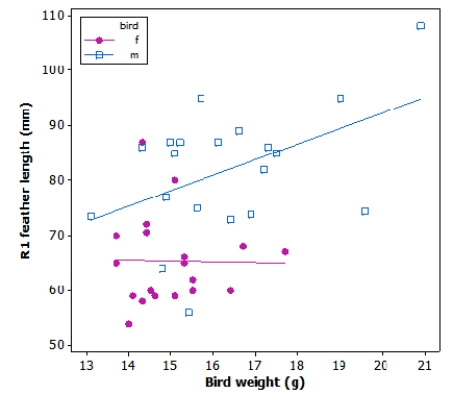Multiple Choice
Tail-feather length in birds is sometimes a sexually dimorphic trait. That is, the trait differs substantially for males and for females. Researchers studied the relationship between tail-feather length (measuring the R1 central tail feather) and weight in a sample of 20 male and 21 female long-tailed finches raised in an aviary. Which of the following statements is NOT true?
Which of the following statements is NOT true?
A) Male birds that are heavier tend to have longer tail feathers.
B) The ranges of weight typical of male and female birds are similar.
C) Overall, females tend to have smaller tail feathers than males, for a given body weight.
D) Both males and females show a clear positive linear relationship between weight and tail-feather length.
Correct Answer:

Verified
Correct Answer:
Verified
Q2: Tail-feather length in birds is sometimes
Q3: Tail-feather length in birds is sometimes a
Q4: Which of the following statements is correct?<br>A)The
Q5: Tail-feather length in birds is sometimes
Q6: Before surgical removal of a diseased parathyroid
Q7: Tail-feather length in birds is sometimes a
Q8: One of nature's patterns connects the
Q9: Babies typically learn to crawl approximately
Q10: A researcher noticed that, for streams along
Q11: A research survey of approximately 13,900 incoming